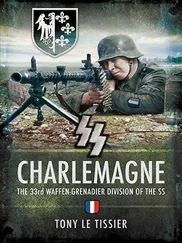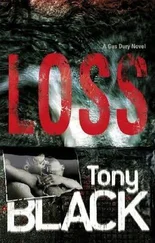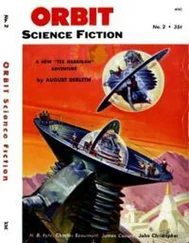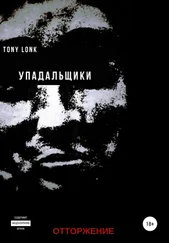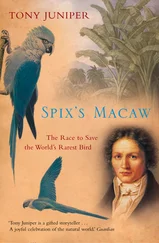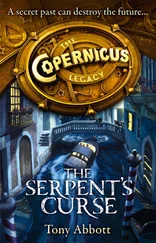Unlike memory, which confirms and reinforces itself, history contributes to the disenchantment of the world. Most of what it has to offer is discomforting, even disruptive—which is why it is not always politically prudent to wield the past as a moral cudgel with which to beat and berate a people for its past sins. But history does need to be learned—and periodically re-learned. In a popular Soviet-era joke, a listener calls up ‘Armenian Radio’ with a question: ‘Is it possible’, he asks, ‘to foretell the future?’ Answer: ‘Yes, no problem. We know exactly what the future will be. Our problem is with the past: that keeps changing’.
So it does—and not only in totalitarian societies. All the same, the rigorous investigation and interrogation of Europe’s competing pasts—and the place occupied by those pasts in Europeans’ collective sense of themselves—has been one of the unsung achievements and sources of European unity in recent decades. It is, however, an achievement that will surely lapse unless ceaselessly renewed. Europe’s barbarous recent history, the dark ‘other’ against which post-war Europe was laboriously constructed, is already beyond recall for young Europeans. Within a generation the memorials and museums will be gathering dust—visited, like the battlefields of the Western Front today, only by aficionados and relatives.
If in years to come we are to remember why it seemed so important to build a certain sort of Europe out of the crematoria of Auschwitz, only history can help us. The new Europe, bound together by the signs and symbols of its terrible past, is a remarkable accomplishment; but it remains forever mortgaged to that past. If Europeans are to maintain this vital link—if Europe’s past is to continue to furnish Europe’s present with admonitory meaning and moral purpose—then it will have to be taught afresh with each passing generation. ‘European Union’ may be a response to history, but it can never be a substitute.
Part One Insert
Page 1, top (Bergen-Belsen corpses): George Rodger/ Time Life /Getty Images; bottom (Soviet retribution, 1946): AKG Images.
Page 2, top (Mihailović trial, 1946): John Phillips/ Time Life /Getty Images; bottom (French retribution, 1944): Bettmann/Corbis.
Page 3, top (coal shortage, London, 1947): Harry Todd/Fox Photos/Getty Images; bottom (welfare booth, London, 1946): Topical Press Agency/Getty Images.
Page 4, top (Marshall Aid sugar arriving): Edward Miller/Keystone/Getty Images; middle (Marshall Aid, Greece): Bettmann/Corbis; bottom (cartoon, USSR refusing Marshall Aid): Alain Gesgon/CIRIP.
Page 5, top (Czech coup, 1948): Bettmann/Corbis; middle (Yugoslavia’s Tito, 1948): Walter Sanders/ Time Life /Getty Images; bottom (Berlin Blockade, 1948): AKG Images.
Page 6, top (Schuman, Bevin and Acheson): Keystone/Getty Images; bottom (Stalin with child): Wostok Press.
Page 7, top (Berlin uprising, 1953): AKG Images; middle (Rajk Trial, 1949): Bettmann/Corbis; bottom (Gulag laborers, 1949-53): Wostok Press.
Page 8, top (Sartre in Leningrad, 1954): AFP/Getty Images; bottom (Aron at RFE, 1952): Archives familiales, Raymond Aron, Radio Free Europe.
Part Two Insert
Page 1, top (Khrushchev in USSR): Wostok Press; middle (Nagy, Tildy and Maleter): AFP/Getty Images; bottom (building Berlin Wall, 1961): AKG Images.
Page 2, top (Fassbinder poster): Ronald Grant Archive; bottom (Adenauer and Berlin Wall, 1961): AKG Images.
Page 3, top (Dutch moved out of Indonesia, 1949): Magnum/Henri Cartier Bresson; bottom (French prisoners, Indo-China, 1954): Gamma/J. C. Labbe Collection/Katz Pictures.
Page 4, top (Suez protest, 1956): ECPAD; middle (De Gaulle to power, 1958): Loomis Dean/ Time Life /Getty Images; bottom (OAS poster): Alain Gesgon/CIRIP.
Page 5, top (Belgians leaving Congo, 1960): Gamma/Keystone/Katz Pictures; bottom (British Empire by Vicky, 1962): Vicky/ Evening Standard 6.12.1962/Centre for the Study of Cartoons & Caricature, University of Kent.
Page 6, top (car in Czechoslovakia, 1959): Bettmann/Corbis; middle (car in Britain and women, 1960): Magnum/Bruce Davidson; bottom (Bardot at seaside): George W. Hales/Getty Images.
Page 7, top (urban planning, Glasgow, 1953): Haywood Magee/Getty Images; middle (Teddy Boys, 1955): Popperfoto; bottom (Beatles, 1964): John Leongard/ Time Life /Getty Images.
Page 8, top (French students’ strike, 1968): Magnum/Bruno Barbey; middle (Italian workers’ strike, 1969): Bettmann/Corbis; bottom (Prague Spring, 1968): Bettmann/Corbis.
Part Three Insert
Page 1, top (Baader-Meinhof poster): AKG Images; bottom (Red Brigades terrorists) Bettmann/Corbis.
Page 2, top (ETA terrorists, 1982): Magnum/Harry Gruyaert; bottom (Belfast children, 1976): Davis Factor/Corbis.
Page 3, top (Portuguese immigrant workers, France, 1970): J. Pavlosky/Rapho; bottom (Italian women divorce protest, 1974): Contrasto/Katz Pictures.
Page 4, top (Juan Carlos and Franco, 1971): Bettmann/Corbis; bottom (Lisbon woman newspaper vendor): Magnum/Jean Gaumy.
Page 5, top (Brandt in Erfurt, 1970): AKG Images; bottom (Mitterrand and Thatcher, 1984): Bryn Colton/Assignments Photographers/Corbis.
Page 6, top (John Paul II in Poland, 1979): Topham Picture Library; middle (Michnik in Gdansk, 1984): Wostok Press; bottom (Gorbachev in Prague, 1987): Peter Turnley/ Corbis.
Page 7, top (train with East German refugees): Marc Deville/Gamma/Katz Pictures; middle (Prague student protest, 1989): Lubomir Kotek/AFP/Getty Images; bottom (Havel and Dubček, 1989): Chris Niedenthal/ Time Life /Getty Images.
Page 8 (Lenin statue, Hungary, 1990): Wostok Press.
Part Four Insert
Page 1, top (Yeltsin and Gorbachev, 1991): Wostok Press; bottom (McDonald’s in Moscow, 1990): Sergei Guneyev/ Time Life /Getty Images.
Page 2, top (Chernobyl effects, Belarus): Magnum/Paul Fusco; middle (Aral Sea disaster, 1997): Magnum/Francesco Zizola; bottom (Ukrainian demonstration, 1991): Alain Nogues/Sygma/Corbis.
Page 3, top (Gypsy poverty, Bucharest, 1996): Wostok Press; middle (eastern European sex trade, 2002): Sasha Bezzubov/Corbis; bottom (NATO at fair in Hungary, 1997): Wostok Press.
Page 4, top (Serb 1389-1989 commemoration, 1989): Wostok Press; middle (Srebrenica massacre graves): Danilo Krstanovic/Reuters; bottom (Albanian refugees, 1999): David Brauchli/Getty Images.
Page 5, top (Turkey and EU, 2004): European Press Photo Agency/Kerim Okten; bottom (French “NON EU” sign): Alternative Libertaire.
Page 6, top (Haider, 1995): Viennareport/Sygma/Corbis; middle (Kjaersgaard, 1998): Dean Francis/Sygma/Corbis; bottom (Blair and NHS reform, 2004): David Bebber/Reuters/Corbis.
Page 7, top (Moroccans in Spain, 2000): J. M. Bendich/Sygma/Corbis; bottom (Somali immigrants in Italy, 1997): Magnum/John Vink.
Page 8, top (Chirac at commemoration): Jacques Langevin/Sygma/Corbis; bottom (Schroeder at commemoration): Arnd Wiegmann/Reuters.
Suggestions for Further Reading
The literature on Europe since the Second World War is huge—and like Europe itself—is steadily expanding. The titles listed here are but a small selection of the English-language books that I have found most interesting or helpful in the writing of Postwar . Wherever possible I have listed books (and editions of books) that are likely to be available for readers to consult or purchase. For the same reason I have not included primary sources except memoirs and the occasional contemporary report, nor have I listed published works in other languages.
Читать дальше

